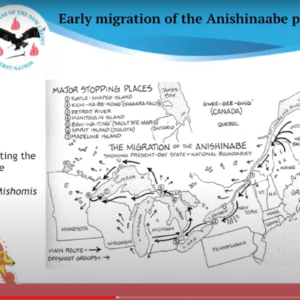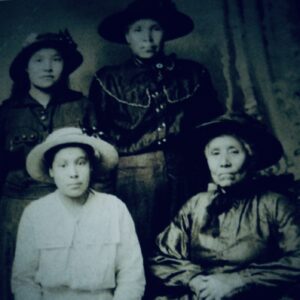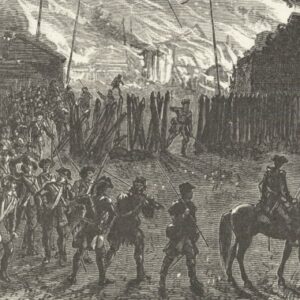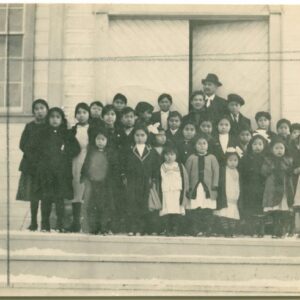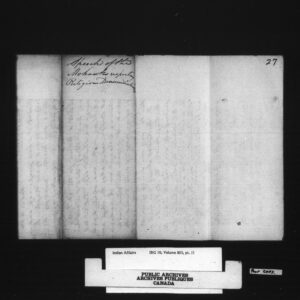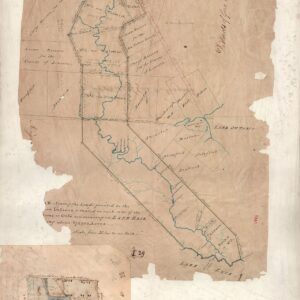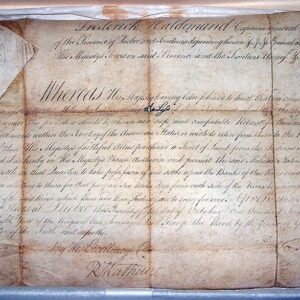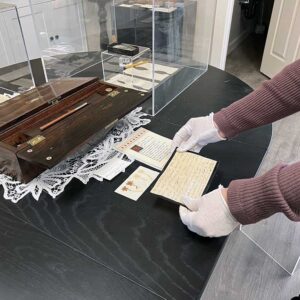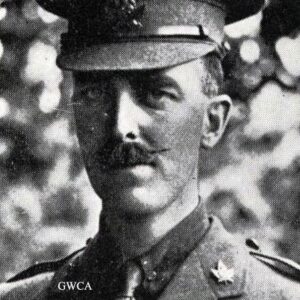
SIX NATIONS — The crush of white settlers into Southwestern Ontario in the late 1700’s and early 1800’s created confusion at best, and at worst, a golden opportunity for fraudsters and thieves. Several half-hearted attempts by the government to remove non-Six Nations squatters from the unceded portions of Haldimand Tract failed time and time again, however, that failure was not the fault of Six Nations leadership which trusted the word of the Crown to deal with the issue, as they were supposed to do.
Looking back over contemporary documents and communications found in the Canadian Archives in Ottawa, one can better understand the confusion and mixed messaging put out by the representatives of the Crown threatening squatters to pack up and get out of Indian territory. At the same time, they were advertising in England free land and farming supplies for anyone wishing to immigrate into the Grand River territory itself. Both the adventurer and the Six Nations were not happy once they got here to find the land they left home fore was actually owned by the Indians, and they could not live on it.
In that atmosphere, the Six Nations Indians were easily branded as the enemy to their family’s future. Six Nations, on the other hand , pushed back against the intrusion by, at first, trying to let the white government deal with its own people. The numbers of squatters soon overwhelmed their ability to evict them, and various arbitrary legislations “fixed” the problem with slanted legislations pitted against the true owners of the Haldimand Tract, putting it all under the authority and wishes of the Crown alone, defrauding and “legally “ stealing the reward given Britains “good and faithful allies” Indian allies for saving Canada against the rebel Americans in the War of Independence, as they say in the U.S., or the American Revolution as it is called on this side of the Canada/U.S. border.
The Six Nations Chiefs and Clan Mothers wanted to know exactly what was going on with their land and after several requests to come to the Mohawk Village and explain it all before the Chiefs. The request was granted, but before doing so, a memo was left in the Superintendent’s office outlining his talking notes. It reads as follows, verbatim:
To the Chiefs:
“The Chiefs of the Six Nations, having been informed, at the Council held July last, that the Land set apart for them on the Grand River is secured to them by the Proclamation of General Haldimand; and that no part of their tract can be alienated unless first surrendered by the Chiefs in Council for a particular object, with the concurrence of the Executive Government; and that the. Settlers near the Grand River are aware that an order in Council was passed in the year 1802, declaring that no purchase could be legally made from and individual of the Six Nations without the sanction of Government, and that no land could be acquired from the Indians by Any private arrangement of the parties occupying improvements of cleared farms; and that the proceeds of every Lot which may be sold by the consent of the Chiefs, and the previous sanction of the Government, become the property of the whole of the Six Nations; it is now only necessary to explain to them, that three descriptions of claimants occupying portions of the Indian Reserve (Haldimand Tract) have petitioned that their claims may be investigated.
First — The persons who were located on the Grand River with the Six Nations on their first entering the Province.
Second — Those who hold Land under Joseph Brant’s leases.
Thirdly — Those who have obtained possession of Lots from individuals without the consent of the Chiefs in Council, and in defiance of the order in Council of 1802.
These three descriptions of claims have been examined by the Trustees of the Six Nations, and the remarks and recommendations of the Trustees in regard to the validity of the claims brought forward will be laid before the Chiefs and explained to them by their Superintendent, in order that they may be finally adjusted, and titles given to such claimants as appear to have furnished proof of their having obtained possession of the Land which they occupy by the consent of the Chiefs in Council, the Government, or by holding Brant leases.
From the annexed documents the Chiefs will able to ascertain their actual property, and will see the necessity of making such arrangements for the management of the fine tract of Land ceded to them, as will secure to them an ample revenue; independent of the Lots which are to be held by each family and entitled for the benefit of their Children.
Return of the Lands, surrendered by the Chiefs of Indians with the consent of Government:
Six Hundred Acres included in the Brantford Lots, and to the Northward of Brantford. — Such Lots of this tract have been sold, as specified in return No.1.
The Cayuga Tract — Lots have been sold as specified in Return No.2.
The proceeds of those Lands which have been paid to the Commissioner of Crown Lands, have been invested for the benefit of the Six Nations, as specified in Return No.3.
Return No.4, contains an account of the proceeds of Land sold by Colonel Joseph Brant, under the Agency of the late Colonel Claus.
The Lands ceded to the Six Nations being the property of the whole, no occupant of any Lot can dispose of the Land which he cultivates without the consent of the Chiefs in Council, and the Government; more can any Land be acquired on the Grand River unless it be first surrendered to the Crown, by the Six Nations. It is therefor the duty of the Chiefs to look after their property in general, as well as the portions placed under the guardianship of a particular tribe.
With respect to improved Lots occupied by the individuals if the Six Nations above the Bridge of Brantford, which may be inconveniently surrendered by Settlers, there can be no objection, under present circumstances, to their being disposed of by the Six Nations for the benefit of the whole, provided that the Chiefs surrender the Land to the Crown, with the consent of the Government, and that the occupant receives the value of the improvements made by him.
The land will be divided not six portions, and placed under the protection of the respective tribes so soon as the Land can be Surveyed, and divided into Lots.
To prevent imposition, with the reference to the improvements that may probably be authorized to be disposed of above the Brantford Bridge, it must be understood, that the Superintendent of the Six Nations will be called upon to inspect improvements offered for Sale, previously to an arrangement being made for disposing of them; and that no person will be permitted to occupy the said improvements of the Indians without this inspection, and the price offered for such improvements being reported and approved by the Superintendent.”
Reading Someone Else’s Mail is a regular historical column taking a look at history through letters and correspondence in Canada’s archives.


